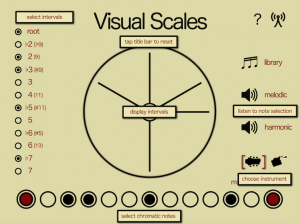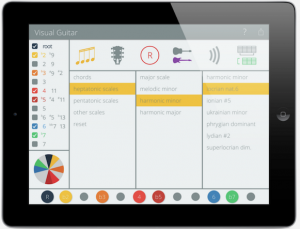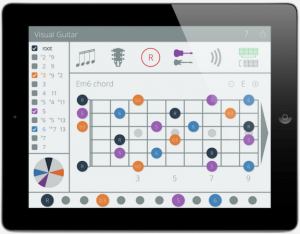Learning sinks in when we do it. That sounds basic, but so many people think it is something that is done to them – the teacher will teach me, that’s how I learn. Well, not really. The teacher presents, facilitates, encourages, fosters, but the learner learns. Only you can do it. Simple and very powerful when you own that. What does that have to do with scales? That is this week’s topic for #MUS654: Scales and the relationships of notes. If it is up to the student to be the active learner, ok, but how can the teacher do her part to guide and present opportunities for comprehension, understanding, context, and application?
How did you learn scales?
Every time I ask a class how they learned scales, someone says the teacher gave them a book and that was it. They just had to read the music in the book and get on with it. Oh, and they learned scales for an exam, no particular other reason.
Sometimes that can lead to leaving a musician with a stunted level of understanding on so many levels – basic theory, more complex harmony, contexts outside their own instrument. So what about that beginning learning? Scales are built on patterns, and they all are made out of the same musical alphabet. I like the idea of experiencing things in different ways – see it, speak about it, read about it, do it, build it, have it be tactile.. and all of those are possible with scales.
‘Playing’ with scales
A couple of years ago I found an app called ‘Visual Scales’. Sadly it is not available any more. I must have downloaded it in a short window. The original version of the app gave you a circle and allowed you to choose which notes were in your scale. It then visually showed you the distance between the notes, both linearly and on a clock face, to show the ongoing context and intervals. Then you could choose to listen to your scale either as individual tones or as a simultaneous chord. It told you what chord it would be if played simultaneously and you could choose to hear it either on piano or guitar. It’s great!
I let my youngest son have a play with it, and he built a scale really quickly. Interestingly, he wasn’t concerned with the intervals at first, but just made different patterns.  The first one was of evenly spaced notes… Then when he listened he was surprised at how it sounded, and moved the notes around until it made the sounds he was expecting. He had made a whole tone scale, which was new to him before that moment, but because he built it, listened to it, and then changed the orientation of the notes, it meant HE was active in shaping his learning and it meant something to him. I very much enjoyed observing the process, and for him it was a game. He was allowed to explore, experiment, and I held my tongue and did not tell him what to do. Those little mistakes, mini-failures, when he didn’t build the scale he thought he was building, are very informative. There is an option to have explanations come up for all the bits on screen. I thought GREAT, I can share this app, but then I found it doesn’t exist any more. (drat!)
The first one was of evenly spaced notes… Then when he listened he was surprised at how it sounded, and moved the notes around until it made the sounds he was expecting. He had made a whole tone scale, which was new to him before that moment, but because he built it, listened to it, and then changed the orientation of the notes, it meant HE was active in shaping his learning and it meant something to him. I very much enjoyed observing the process, and for him it was a game. He was allowed to explore, experiment, and I held my tongue and did not tell him what to do. Those little mistakes, mini-failures, when he didn’t build the scale he thought he was building, are very informative. There is an option to have explanations come up for all the bits on screen. I thought GREAT, I can share this app, but then I found it doesn’t exist any more. (drat!)
The good news is that the people who made it ( shortwavemusic.com ) do have another one that is available to download, but it is only available in the US! So I am very sorry for all of us living somewhere else in the world because it looks like a genuinely useful teaching tool.  The new version is called Visual Guitar 2.0 and it has added some colours to the notes, and a map of the neck of the guitar. That means a student can make the next step in learning and take the abstraction of the scale and put it on the instrument.
The new version is called Visual Guitar 2.0 and it has added some colours to the notes, and a map of the neck of the guitar. That means a student can make the next step in learning and take the abstraction of the scale and put it on the instrument. These images were taken from the app website here: http://shortwavemusic.com/apps/ – as I can’t access the app in my country! It looks great for people who play guitar, but also incredibly useful for all musicians. I love having a different approach to building scales, and something tactile is good. If you don’t like the idea of using an app, what about lego bricks to represent the different intervals between notes, coins of different value. In the UK we have 1p and 2p coins that work well to show a semitone/half-step and a whole tone/whole step between notes. It is also great fun to give a student a little bag of pennies to take away and play with building scales at home.
These images were taken from the app website here: http://shortwavemusic.com/apps/ – as I can’t access the app in my country! It looks great for people who play guitar, but also incredibly useful for all musicians. I love having a different approach to building scales, and something tactile is good. If you don’t like the idea of using an app, what about lego bricks to represent the different intervals between notes, coins of different value. In the UK we have 1p and 2p coins that work well to show a semitone/half-step and a whole tone/whole step between notes. It is also great fun to give a student a little bag of pennies to take away and play with building scales at home.
Play, do, think, engage, learn.
That’s what it’s about.
I’m off to practise.
